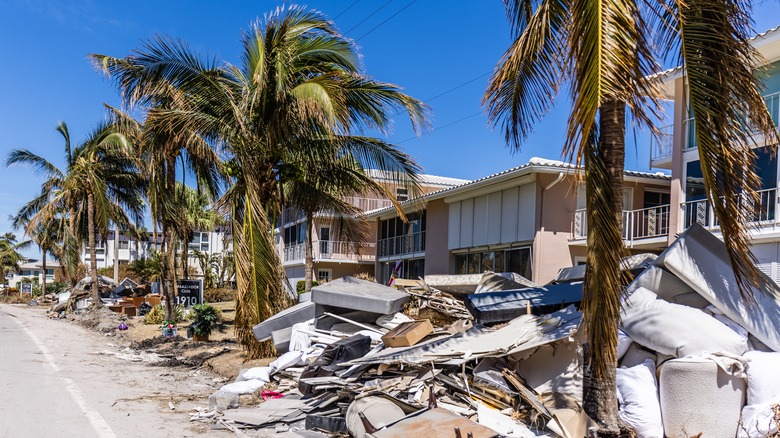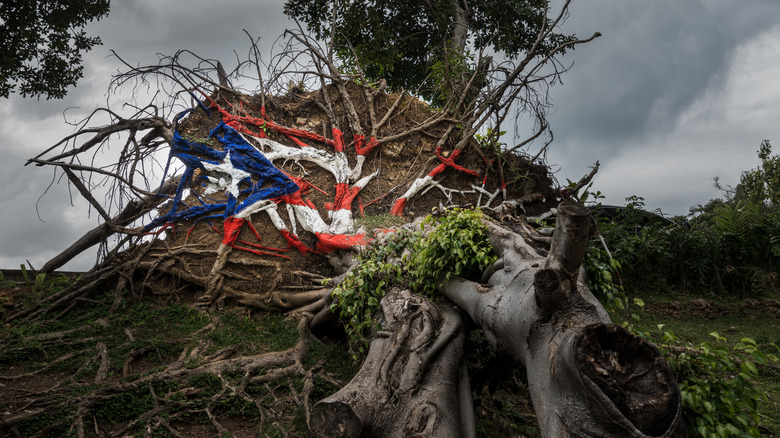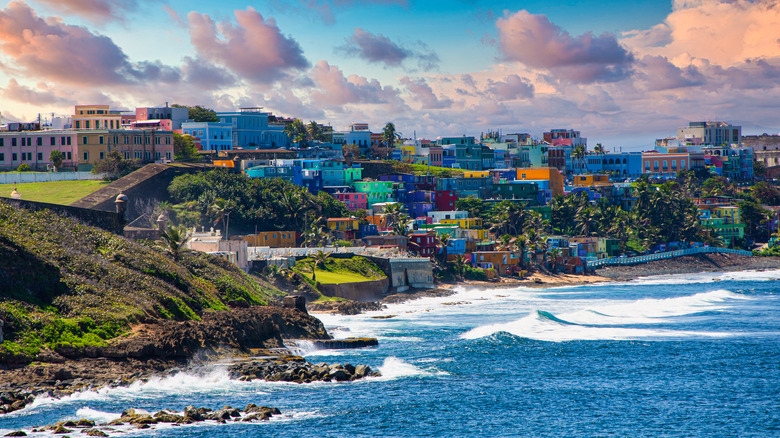How Soon Is Too Soon To Travel To A Destination After A Natural Disaster?
In the age of climate change, natural disasters like hurricanes, landslides, earthquakes, and wildfires are becoming increasingly common. Coastal locations that are considered tourist hotspots are often particularly vulnerable. If you've planned a trip to a destination that a natural disaster has recently hit, you'll have to call off your vacation — and you may be left wondering when it will be appropriate to return.
Simply put, staying away until you can easily book transportation and accommodation, is a good idea. Once disaster relief efforts are wrapping up, local businesses will begin resuming operations, and you'll see that hotels are taking bookings, flights are continuing, and cruises are embarking once again. Once tourism begins to resume, and you can easily book flights and hotels, visiting is probably okay as long as you are willing to be very sensitive and compassionate to the local people who suffered difficult losses.
If disaster relief efforts are still underway after a particular location has re-opened for tourism, stay out from underfoot and stick to attractions and locations open to the public. Consider asking locals and tour guides if any local charities are taking donations during your trip to help support the community where you're vacationing.
What's happening on the ground after a natural disaster
According to the Federal Emergency Management Agency (FEMA), there are four stages to disaster response plans. The first two phases, mitigation, and preparedness, should be in place before a disaster strikes. Once a natural disaster has happened, emergency managers will move into the final two phases; response and recovery.
In the days and weeks following a natural disaster, community members and disaster relief professionals will be hard at work on the ground. The response phase involves the most immediate and essential tasks like searching for survivors, administering first aid, and assuring the overall safety of locals.
Once the immediate needs of community members are taken care of, disaster response managers and volunteers will move into the recovery phase. The recovery phase includes repairing local businesses and homes and rebuilding the local economy.
Sometimes, visiting certain areas while others are still recovering is acceptable. Such was the case after Hurricane Katrina swept through New Orleans in 2005. One year later, local businesses in areas spared from the worst damage were ready to welcome tourists and boost the economy, and events like Jazz Fest and Mardi Gras were back on.
How to know when it is safe to go back without getting in the way
While it might be tempting to volunteer in relief efforts, especially if you feel connected to the community, it is best to leave the boots-on-the-ground work to disaster relief professionals. If you want to help, you can volunteer to raise money for relief efforts or make donations from home.
Tourist dollars are a vital part of the economy in many of these popular spots, and the loss of business causes economic stress in the wake of a disaster. Rest assured that as soon as they're ready to accept visitors, they will. They're likely as eager to get back up and running as you are to visit.
Some tourist hotspots prone to natural disasters, like Puerto Rico, even have real-time visitor readiness trackers for tourists. The island has experienced some severe natural disasters over the past decade. Recovery is still underway, so it is important to be a considerate tourist when visiting Puerto Rico.
The U.S Department of State also offers information and resources on when destinations are deemed safe for tourists after disasters. When a country or region is ready for visitors after a natural disaster, you'll hear the news that the location is welcoming tourists again. Once professionals have dealt with the worst damage, many tourist destinations will be eager to welcome you back.


